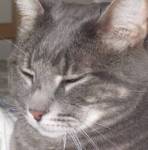better understanding of why hypopneas remain uncorrected
-
RMinOntario
- Posts: 121
- Joined: Sat Jun 06, 2009 2:40 pm
- Location: Guelph, Ontario, Canada
better understanding of why hypopneas remain uncorrected
I have asked the forum previously about the reason the APAP did not correct my HI and AI to a lower index. I got some good responses, but still didn't grasp the answers completely. I didn't want to keep asking for clarification after repeated explanations. This just applies to the HI right now. I should have understood that 'flow limitation' that was mentioned was the term for partial airway constriction. The following is the explanation a Resmed rep gave my DME for my question. Realizing now, that shallow breathing is not a problem in itself, makes sense to me. Maybe this wording may help someone else grasp the answer better. I know the info is the same, just using different words.
Hi Rosemary,
I just got some answers back from the Representative from Resmed and I thought I would forward them to you!
Hope you had a great long weekend!
1) She would like to know why her AHI is still at 9.6 with the APAP.
By definition a hypopnea is “shallow breathing” and is not necessarily indicative of a problem with the airway. Shallow breathing is normal when we sleep and increasing pressure will not help with this and can in fact worsen things causing apneas. The AutoSet will only treat hypopneas if they are accompanied by flow limitation (partial airway obstruction). During periods of “normal shallow breathing” (with no accompanying airflow limitation) the AutoSet will record these events but not adjust pressure for them. An index of 0 is not a realistic goal as some shallow breathing is normal.
Hi Rosemary,
I just got some answers back from the Representative from Resmed and I thought I would forward them to you!
Hope you had a great long weekend!
1) She would like to know why her AHI is still at 9.6 with the APAP.
By definition a hypopnea is “shallow breathing” and is not necessarily indicative of a problem with the airway. Shallow breathing is normal when we sleep and increasing pressure will not help with this and can in fact worsen things causing apneas. The AutoSet will only treat hypopneas if they are accompanied by flow limitation (partial airway obstruction). During periods of “normal shallow breathing” (with no accompanying airflow limitation) the AutoSet will record these events but not adjust pressure for them. An index of 0 is not a realistic goal as some shallow breathing is normal.
_________________
| Mask: AirFit™ N10 Nasal CPAP Mask with Headgear |
| Additional Comments: AHI at sleep study - 39.6, Pressure 12.4 cm H2O, equipment trials 6/2009, my own equipment 7/2009 |
Re: better understanding of why hypopneas remain uncorrected
another thing you can look into, not that I want to throw you too far off course...
google or search in here for the term catharenia (I may have spelled it slightly wrong, and will hope someone corrects me if I did).
Long story short I noticed some months back I was somewhat awake, somewhat asleep, and I found myself holding my breath. not sure why I was doing it, but it sort of set off a light bulb in my head. I posted up the question in here, and it was funny how many other people acknlwledged that they did the same thing. Mind you, it is not an intentional act, and not sure why I/we do it. Some people "motorboat" when exhaling, or make a whistling sound when letting the air out...
I would suspect this is also a factor in our apenas and hyponeas... the cpap is trying to force air into us, but our bodies are fighting it.
Something I wanted to reseach further, but like so many other things, get sidetracked and forget.
hey look, a kitty
google or search in here for the term catharenia (I may have spelled it slightly wrong, and will hope someone corrects me if I did).
Long story short I noticed some months back I was somewhat awake, somewhat asleep, and I found myself holding my breath. not sure why I was doing it, but it sort of set off a light bulb in my head. I posted up the question in here, and it was funny how many other people acknlwledged that they did the same thing. Mind you, it is not an intentional act, and not sure why I/we do it. Some people "motorboat" when exhaling, or make a whistling sound when letting the air out...
I would suspect this is also a factor in our apenas and hyponeas... the cpap is trying to force air into us, but our bodies are fighting it.
Something I wanted to reseach further, but like so many other things, get sidetracked and forget.
hey look, a kitty
Re: better understanding of why hypopneas remain uncorrected
Thanks for posting this, Rosemary. I've been coming to the conclusion myself that many of my hypops are probably due to what I call "irregular breathing," but is most likely varying hypopneic breathing resulting in mucho hypops scored by my ResMed. I've been wearing my oximeter lately, and my ODI is generally *much* better than my AHI (and closer to my AI). Although my BiPAP trial has been very educational this first week, I'm going to try straight CPAP with EPR tonight and see how that goes again. Both with APAP and BiPAP, my numbers vary widely (and CPAP too, but perhaps not quite as much), and I suspect a lot of it has to do with my sinuses, even though I go to great lengths to keep 'em as clear as possible. Also, I don't know how much is related to my asthma. I guess I'll never be one of those under 2.0 AHI ResMed users and perhaps not even an under 5.0! If I can stay under 10 AHI with an AI of less than 1.0, I'll be happy now. But ... I know I won't often make that.
I've been using Melatonin nightly for a while, too, and I'm beginning to suspect that even though I *think* I sleep better with it, my numbers are worse, and I do feel groggy the next day. Now I'm trying some Delta sleep tracks I downloaded from Amazon.
I've been using Melatonin nightly for a while, too, and I'm beginning to suspect that even though I *think* I sleep better with it, my numbers are worse, and I do feel groggy the next day. Now I'm trying some Delta sleep tracks I downloaded from Amazon.
_________________
| Mask: AirFit™ P10 For Her Nasal Pillow CPAP Mask with Headgear |
| Additional Comments: CPAP 6/5/2009, Rx: 11-16, OSCAR |
- spacetoast
- Posts: 174
- Joined: Mon Aug 10, 2009 4:23 pm
- Location: Golden, CO
Re: better understanding of why hypopneas remain uncorrected
What a timely post. I had just posted earlier about centrals vs. obstructives and this sheds some light on what I was seeing in my data.
My machine and software record centrals and I noticed that sometimes I'd get a few central hypopneas (rarely central apneas), but the machine would not adjust to correct them. It would only start to adjust based on a flow limitation, snoring, or sudden apnea/hypopnea. It's a relief to hear that shallow breathing is not uncommon and possibly normal. I guess the algorithm in auto machines takes that into consideration.
What I'd like to know now is how does an auto machine differentiate between shallow breathing (aka central hypopnea) and legitimate flow limitations / obstructive hypopneas.
My machine and software record centrals and I noticed that sometimes I'd get a few central hypopneas (rarely central apneas), but the machine would not adjust to correct them. It would only start to adjust based on a flow limitation, snoring, or sudden apnea/hypopnea. It's a relief to hear that shallow breathing is not uncommon and possibly normal. I guess the algorithm in auto machines takes that into consideration.
What I'd like to know now is how does an auto machine differentiate between shallow breathing (aka central hypopnea) and legitimate flow limitations / obstructive hypopneas.
Re: better understanding of why hypopneas remain uncorrected
I don't think the machines can distinguish between them, which is the reason for high hypopnea counts for those of us ResMed users with shallow/variable breathing. ResMed machines, IIRC, score a hypopnea when flow is limited by 50% and apnea at 80%. Respironics, on the other hand, records flow limitations and hypopneas separately, though I don't know what the thresholds are. I have even less knowledge about other machines....spacetoast wrote:What I'd like to know now is how does an auto machine differentiate between shallow breathing (aka central hypopnea) and legitimate flow limitations / obstructive hypopneas.
_________________
| Mask: AirFit™ P10 For Her Nasal Pillow CPAP Mask with Headgear |
| Additional Comments: CPAP 6/5/2009, Rx: 11-16, OSCAR |
- spacetoast
- Posts: 174
- Joined: Mon Aug 10, 2009 4:23 pm
- Location: Golden, CO
Re: better understanding of why hypopneas remain uncorrected
Hmmm. Does it look like the pressure increases after a "run" of flow limitations? Whether they be hypopneas or just flow limitations? That's a good question too: What does the machine score as hypopnea vs. flow limitation.twokatmew wrote:I don't think the machines can distinguish between them, which is the reason for high hypopnea counts for those of us ResMed users with shallow/variable breathing. ResMed machines, IIRC, score a hypopnea when flow is limited by 50% and apnea at 80%. Respironics, on the other hand, records flow limitations and hypopneas separately, though I don't know what the thresholds are. I have even less knowledge about other machines....spacetoast wrote:What I'd like to know now is how does an auto machine differentiate between shallow breathing (aka central hypopnea) and legitimate flow limitations / obstructive hypopneas.
-
RMinOntario
- Posts: 121
- Joined: Sat Jun 06, 2009 2:40 pm
- Location: Guelph, Ontario, Canada
Re: better understanding of why hypopneas remain uncorrected
Hmmm. Does it look like the pressure increases after a "run" of flow limitations? Whether they be hypopneas or just flow limitations? That's a good question too: What does the machine score as hypopnea vs. flow limitation.[/quote]
From this answer from the rep, I'd take it that both hypopneas & flow limitations score as hypopneas, but only the true flow limitation (obstructive hypopneas) may be corrected.
From this answer from the rep, I'd take it that both hypopneas & flow limitations score as hypopneas, but only the true flow limitation (obstructive hypopneas) may be corrected.
_________________
| Mask: AirFit™ N10 Nasal CPAP Mask with Headgear |
| Additional Comments: AHI at sleep study - 39.6, Pressure 12.4 cm H2O, equipment trials 6/2009, my own equipment 7/2009 |
- Maryland_Mike
- Posts: 71
- Joined: Tue Aug 11, 2009 11:01 pm
- Location: Davidsonville, MD
Re: better understanding of why hypopneas remain uncorrected
Glad to see this thread. I'm in my second week of CPAP therapy and keep trying to get my AHI below the mid-teens. Almost all my events are hypops, as my AI is usually below 2, sometimes below 1. In my sleep study, all my apenas were centrals.
I also have asthma. I wonder if I get benefit from simply having my lungs inflated all night. I feel better than ever but no matter what pressure I use my hypops continue, though at a lower rate than in my sleep study.
I also have asthma. I wonder if I get benefit from simply having my lungs inflated all night. I feel better than ever but no matter what pressure I use my hypops continue, though at a lower rate than in my sleep study.
_________________
| Mask: Ultra Mirage™ Full Face CPAP Mask with Headgear |
| Additional Comments: CMS50-E Pulse Oximeter |
Re: better understanding of why hypopneas remain uncorrected
Thanks to everyone that contributed to this post. It answered some questions that I had.
Bill
Bill
There is only one way to achieve happiness on this terrestrial ball, And that is to have either a clear conscience, or none at all.
Ogden Nash
Ogden Nash
Re: better understanding of why hypopneas remain uncorrected
My numbers are very similar to yours, MM. (Also all hypops and a handful of central apneas in my sleep studies.) I have severe asthma (steroid dependent), and my pulmo/sleep doc hopes xPAP may help the asthma. Having started CPAP this past June, it'll be interesting to see how the coming winter goes. The last two winters I've had multiple bouts of bacterial bronchitis and sinus infections, all of which aggravate my already precarious asthma.Maryland_Mike wrote:Glad to see this thread. I'm in my second week of CPAP therapy and keep trying to get my AHI below the mid-teens. Almost all my events are hypops, as my AI is usually below 2, sometimes below 1. In my sleep study, all my apenas were centrals.
I also have asthma. I wonder if I get benefit from simply having my lungs inflated all night. I feel better than ever but no matter what pressure I use my hypops continue, though at a lower rate than in my sleep study.
I'm ready for xPAP to fix everything!
_________________
| Mask: AirFit™ P10 For Her Nasal Pillow CPAP Mask with Headgear |
| Additional Comments: CPAP 6/5/2009, Rx: 11-16, OSCAR |
Re: better understanding of why hypopneas remain uncorrected
So to put it perhaps too simply, if your HI remains high but your AI is low - it may be that you are a shallow breather and it may not be a problem?
In my sleep study my HI was 13.2 and my AI was 0.5 - Maybe I am just a shallow breather? I guess the low oxygen reading confirmed the diagnosis of "apnea" in the sleep study. The only way to know if the machine is working if one is still getting HI over 10 is to use an oximeter?
Any recommendations of oximeters?
In my sleep study my HI was 13.2 and my AI was 0.5 - Maybe I am just a shallow breather? I guess the low oxygen reading confirmed the diagnosis of "apnea" in the sleep study. The only way to know if the machine is working if one is still getting HI over 10 is to use an oximeter?
Any recommendations of oximeters?
Masks tried: Mirage Activa Nasal, Comfort Gel Nasal, Full Life, Fit Life
-
RMinOntario
- Posts: 121
- Joined: Sat Jun 06, 2009 2:40 pm
- Location: Guelph, Ontario, Canada
Re: better understanding of why hypopneas remain uncorrected
In looking over my sleep studies again, I think shallow breathing may really be an issue for me. I'll list my results and maybe someone more knowledgeable can confirm my thinking.
Original (pre-cpap) study, March 15, 09
Central apnea index: 1.1
Obstructive AI: 5.9
Hypopnea index: 32.6
AI + HI: 39.6
With CPAP study, April 21, 09
Central apnea index: 0.0
Obstructive AI: 0.3
Hypopnea index: 12.2
AI + HI: 12.4
So considering that my AHI after the CPAP night was 12.4 (which I didn't realize 'til now), I guess I can assume that all those hypops were due to shallow breathing. Would someone please give me your valued opinions.
Thanks, Rosemary
Original (pre-cpap) study, March 15, 09
Central apnea index: 1.1
Obstructive AI: 5.9
Hypopnea index: 32.6
AI + HI: 39.6
With CPAP study, April 21, 09
Central apnea index: 0.0
Obstructive AI: 0.3
Hypopnea index: 12.2
AI + HI: 12.4
So considering that my AHI after the CPAP night was 12.4 (which I didn't realize 'til now), I guess I can assume that all those hypops were due to shallow breathing. Would someone please give me your valued opinions.
Thanks, Rosemary
_________________
| Mask: AirFit™ N10 Nasal CPAP Mask with Headgear |
| Additional Comments: AHI at sleep study - 39.6, Pressure 12.4 cm H2O, equipment trials 6/2009, my own equipment 7/2009 |
Re: better understanding of why hypopneas remain uncorrected
Rosemary, my questions regarding your titration study are:
1. 12.4 AHI is nowhere near the "normal" 5.0. Why did they stop the titration before getting you at least close to a normal AHI? Do you know what your average and lowest oxy sat was during the titration?
2. Seeing as that 12.4 is during a titration study, it should accurately represent the true events. When we see 12.4 AHI on a ResMed machine, it's really only useful when considered as part of a trend.
I think we can assume high HI on a ResMed machine *may* be caused by erratic or shallow breathing. I don't think we can assume the same during an actual sleep study where we're hooked up to additional machinery. Have you been able to ask your doc or sleep clinic why they stopped the titration when you AHI was so high?
1. 12.4 AHI is nowhere near the "normal" 5.0. Why did they stop the titration before getting you at least close to a normal AHI? Do you know what your average and lowest oxy sat was during the titration?
2. Seeing as that 12.4 is during a titration study, it should accurately represent the true events. When we see 12.4 AHI on a ResMed machine, it's really only useful when considered as part of a trend.
I think we can assume high HI on a ResMed machine *may* be caused by erratic or shallow breathing. I don't think we can assume the same during an actual sleep study where we're hooked up to additional machinery. Have you been able to ask your doc or sleep clinic why they stopped the titration when you AHI was so high?
_________________
| Mask: AirFit™ P10 For Her Nasal Pillow CPAP Mask with Headgear |
| Additional Comments: CPAP 6/5/2009, Rx: 11-16, OSCAR |
Re: better understanding of why hypopneas remain uncorrected
The full name of this condition is actually OSAHS, or Obstructive Sleep Apnea/Hypopnea Syndrome. We end up with a diagnosis of OSA (shortened) if our total AHI is greater than 5.0, and we don't have a significant number of central apneas to change the diagnosis to central or complex sleep apnea. It matters not whether we have only hypopneas as opposed to obstructive apneas. We are still experiencing arousals, and many of us have quite severe oxygen desaturation.dkdc wrote:So to put it perhaps too simply, if your HI remains high but your AI is low - it may be that you are a shallow breather and it may not be a problem?
In my sleep study my HI was 13.2 and my AI was 0.5 - Maybe I am just a shallow breather? I guess the low oxygen reading confirmed the diagnosis of "apnea" in the sleep study. The only way to know if the machine is working if one is still getting HI over 10 is to use an oximeter?
Any recommendations of oximeters?
When we see the high HI in ResMed data, it *may* be due to erratic or shallow breathing. Interestingly enough, my overall AHI (including high HI) is better since I stopped using Melatonin! Even though my auto was going as high as 12.8cm, I find I usually do better at 10cm, and I was titrated at 7cm!
_________________
| Mask: AirFit™ P10 For Her Nasal Pillow CPAP Mask with Headgear |
| Additional Comments: CPAP 6/5/2009, Rx: 11-16, OSCAR |
-
RMinOntario
- Posts: 121
- Joined: Sat Jun 06, 2009 2:40 pm
- Location: Guelph, Ontario, Canada
Re: better understanding of why hypopneas remain uncorrected
twokatmew,
My %SaO2 awake was 90.0 - 100% with a mean of 94.8%
NREM was 87.0 - 97.0% with a mean of 92.9%
REM was 89.0 - 96.0% with a mean of 93.2%
TRT (not sure what that is) 87.0 - 100% with a mean of 93.9%
%Duration SaO2 in Range
100 - 90% Awake 95.7, NREM 96.9, REM 98.6, and TST (not sure what that is) 97.4
90 - 80% Awake 0.3, NREM 2.7, REM 1.4, and TST (not sure what that is) 2.3
Nothing lower was reported.
I don't really know the significance of the above numbers. Maybe you can explain.
My %SaO2 awake was 90.0 - 100% with a mean of 94.8%
NREM was 87.0 - 97.0% with a mean of 92.9%
REM was 89.0 - 96.0% with a mean of 93.2%
TRT (not sure what that is) 87.0 - 100% with a mean of 93.9%
%Duration SaO2 in Range
100 - 90% Awake 95.7, NREM 96.9, REM 98.6, and TST (not sure what that is) 97.4
90 - 80% Awake 0.3, NREM 2.7, REM 1.4, and TST (not sure what that is) 2.3
Nothing lower was reported.
I don't really know the significance of the above numbers. Maybe you can explain.
_________________
| Mask: AirFit™ N10 Nasal CPAP Mask with Headgear |
| Additional Comments: AHI at sleep study - 39.6, Pressure 12.4 cm H2O, equipment trials 6/2009, my own equipment 7/2009 |














